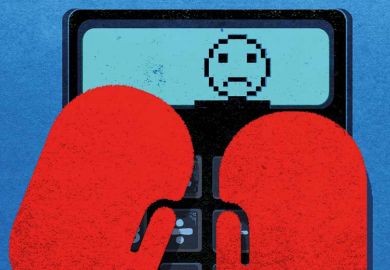Fiji’s November general election – its second since the restoration of democracy in 2014 – saw the re-election of the FijiFirst party. Led by Frank Bainimarama – a naval officer who has led the Pacific island nation since a coup in 2006 – FijiFirst sees higher education as an important means of promoting economic growth.
In 2008, a process of modernising the postsecondary system began with the passage of a new Higher Education Act. The Fiji Higher Education Commission was established to manage quality assurance and to allocate funding. Six specialist higher education colleges were merged to form the Fiji National University. And an income-contingent tertiary education loan scheme was set up.
However, the loan scheme is open to students at just nine of Fiji’s 36 registered postsecondary institutions – even though all but four charge tuition fees. Nearly all these institutions are private, many established by religious foundations, and only 10 qualify for public funding – which has been progressively lifted since 2008. Only four have more than 1,000 students.
The three universities enrol around 93 per cent of domestic students. Fiji National University has about 25,000. The private University of Fiji, established in 2005 by a Hindu foundation that promotes learning, has around 3,000. The University of the South Pacific, founded in 1968, is owned by 12 Pacific governments and operates in all 12 of those countries, but it is headquartered in Fiji and Fijians represent roughly two-thirds of its 27,000 students.
The universities account for about 98 per cent of public higher education funding. The two public institutions have healthy balance sheets, but nearly all the others operate on thin margins and have limited access to capital. Hence, they do not have the resources to invest in programme development, quality assurance and infrastructure – posing a risk to the system’s longer-term development.
However, the re-election of FijiFirst means that the Higher Education Commission is pushing ahead with its ambitious modernisation programme. It has drafted a new strategy that awaits ministerial sign-off, focused on improving access, strengthening the system’s infrastructure and developing stronger links between higher education and employment.
The commission recently published new quality standards for registered institutions, stipulating minimum requirements for quality and sustainability. In addition, it is set to launch a new programme of institutional monitoring, as well as a register of approved qualifications. A more transparent funding model is also awaiting cabinet approval. New information and reporting systems are being trialled and are set to be rolled out over the next two years. Vocational education is also being overhauled.
But there is still a lot to do to lift the performance of Fiji’s tertiary education system. One looming issue is the fragility of institutions. While the two public universities are well-resourced, Fiji relies on a group of small, just-viable, faith-based institutions to produce many of its computing, nursing, hospitality and teaching graduates, and to provide second-chance educational options. A more resilient system will require a new architecture.
The second problem is that the increase in the number of graduates over the past decade has not removed skills shortages. Employers complain that there is poor matching of skills demand to skills supply. The mismatch results partly from families urging their children to aspire to professional careers and to shun trades, despite the high demand for tradespeople. Partly, it is a consequence of the fact that many of Fiji’s graduates emigrate, to pursue careers in Australia and New Zealand, where earnings are higher.
Fijian employers, like employers in most countries, also complain about the work-readiness of graduates. But robust information on the nature and scale of the problems is sketchy and mostly driven by anecdote. The Higher Education Commission has an important role to play in improving information on employment outcomes for graduates, in monitoring institutional performance and quality and in brokering better dialogue between government, employers and institutions.
Developing countries’ higher education systems may lack the sophistication of those in the developed world, but Fiji’s is a fascinating example of very rapid development.
Roger Smyth is the former head of tertiary education policy at New Zealand’s Ministry of Education. He is now an independent consultant and adviser, and recently advised Fiji’s Higher Education Commission.
Register to continue
Why register?
- Registration is free and only takes a moment
- Once registered, you can read 3 articles a month
- Sign up for our newsletter
Subscribe
Or subscribe for unlimited access to:
- Unlimited access to news, views, insights & reviews
- Digital editions
- Digital access to THE’s university and college rankings analysis
Already registered or a current subscriber?





